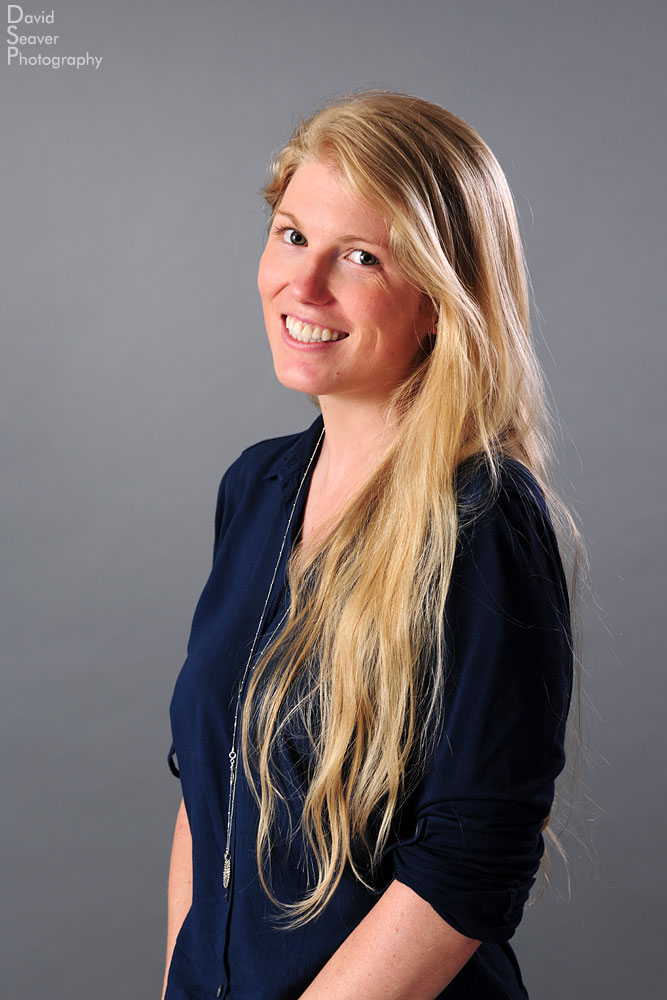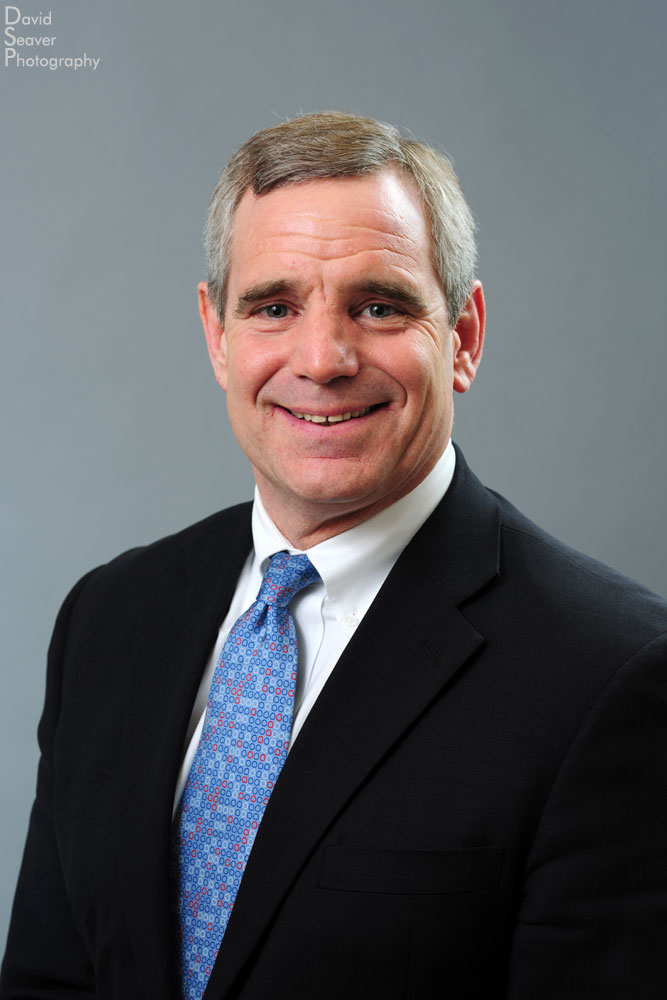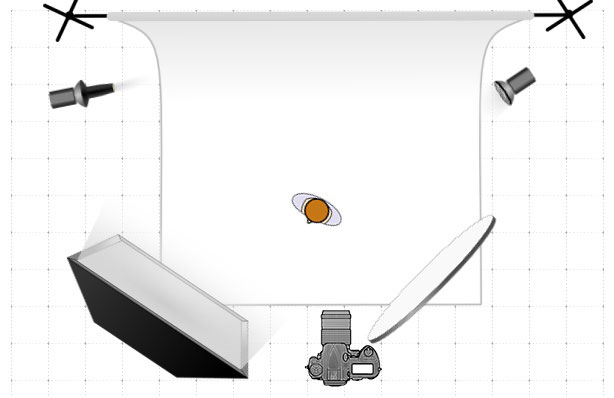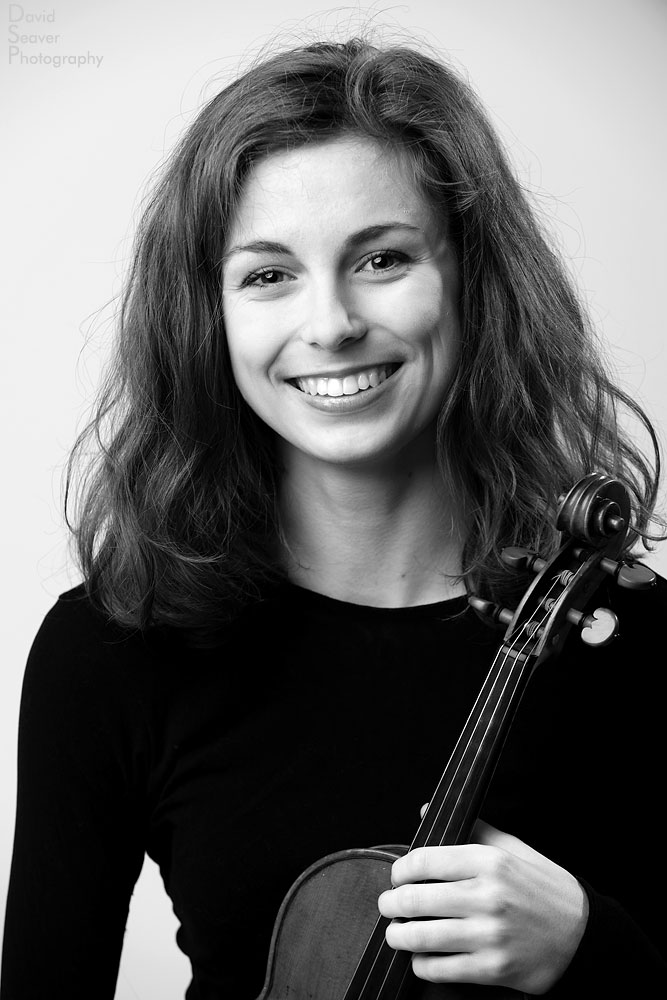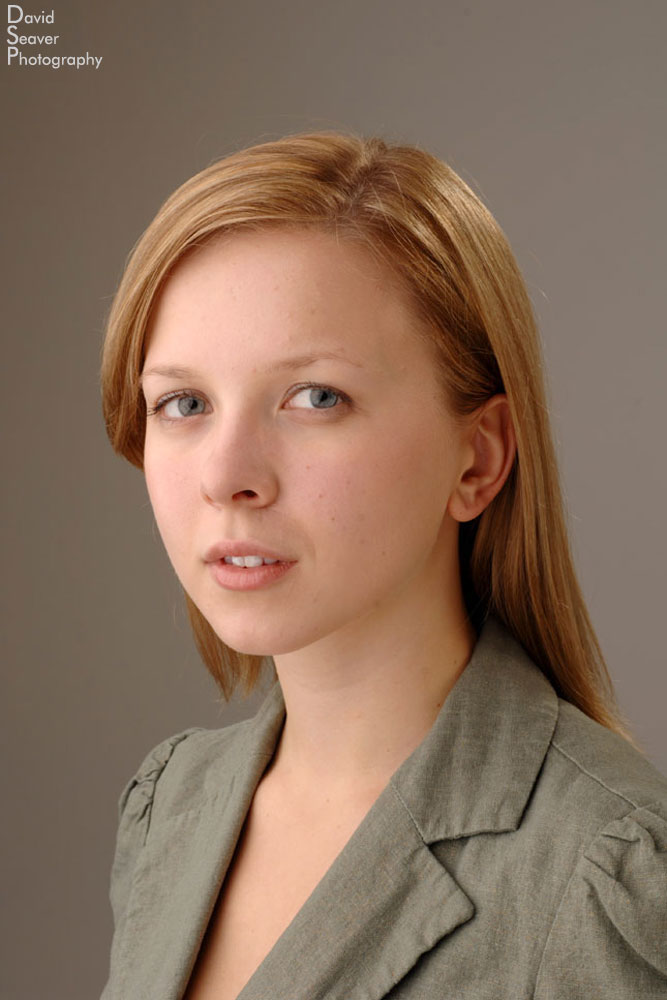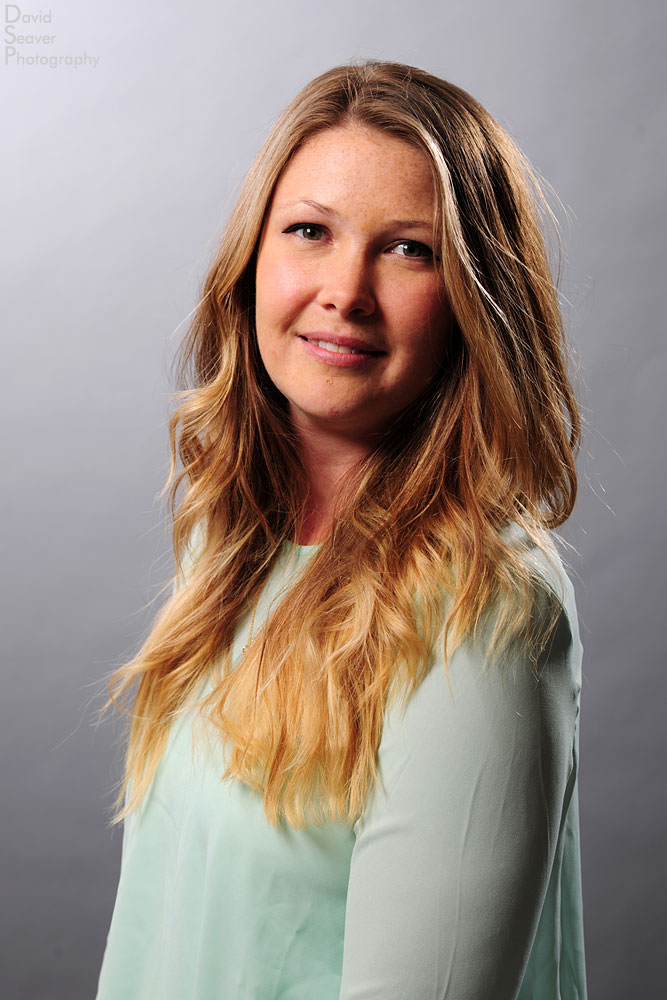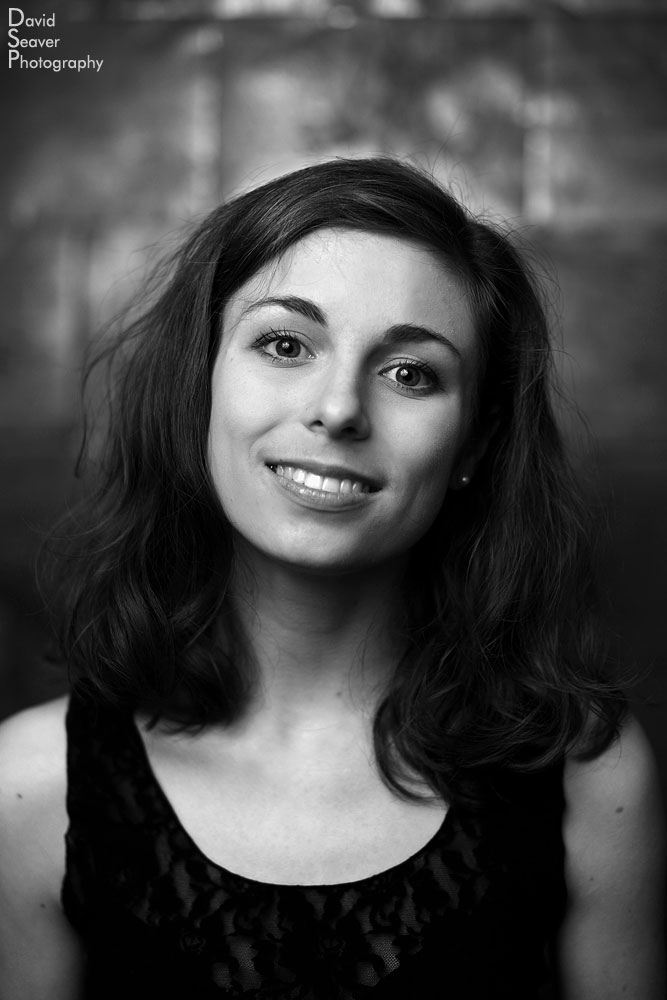How to Take Great Business Headshot Portraits
Headshots are a necessary part of commercial photography. There will always be people who need headshots for their company, online profile, or modeling comp card. While there are myriad ways to shoot a headshot, I will go over the basic setup. It’s a great starting point and will always get you a great photo.
My basic setup is with 2-5 lights and light shapers depending on the situation. If you’re in a confined space and only shooting one or two people, using all small flashes/speedlights is fine. The larger the space and the more people you have lined up, the wiser it is to use large flash units that can run all day and have a higher output. But as I always say, there is no ‘right way’ to do anything in photography. You can bounce, you can use natural light, you can shoot through cloth. This is just one way to do it.
My main/key light is usually a softbox to camera left. Unless the client says otherwise I have the subjects turn their bodies about 45 degrees to their right, showing me the left side of their face (traditionally the ‘more beautiful side’). The main light is about 45 degrees to my left, at head height or higher (depending on ceiling height. The secondary light is either a gridded spot or a softbox (the deeper the baffles the better) coming from the back camera right to highlight the shoulder, separate the subject from the background, and give a little rim light to the hair. My third light is a gridded spot or a snoot raking across the background at an aggressive angle from back camera left to give a little variation to the background. The fourth light can be powered or just a white reflector under the subject, camera front/low right. If you’re using a reflector get it as close to the edge of the frame as possible to fill the shadow created by the key light. When the reflector isn’t enough, I will push a little light through it with a small flash. If the shadows are still too deep, you can bounce yet another flash off the ceiling (Assuming it’s white) to fill in the shadows or run a large umbrella camera right at a lower power to fill the shadows.
This setup is assuming you A.> Have enough lights. B.> Are working in a space large enough to fit all the lights.
With all photography, as soon as you get on site, all the rules go out the window. Many a time, I have been called to do headshots and ended up squeezing into a room the size of a small closet. If the walls are white, you can always bounce off them, especially for the key light, which lessens the space needed. Sometimes I get lucky and the client likes the color of a painted wall and a backdrop isn’t necessary, but most offices are sadly painted beige, not the best photo background.
With this basic setup you can adjust how much contrast there is, and how dramatic the lighting is just by changing the distance and position of the lighting from the subject. This same setup can be used outside or in another setting. If you’re outside or in a well lit location, you can get away with using just the main key light, balancing it with the surroundings.
Take these idea with you the next time you shoot a portrait. Start from a place you know and then start to stray into the unknown.
How to Take Great Travel Photos
Great travel photos are all about being in the right place at the right time. Does that mean it’s all luck. No way. You can ‘create good luck’ but doing a little research, talking to people, and generally saying YES to opportunities.
I love travel photography. It’s what pushed me towards pursuing photography (instead of silversmithing, which I was intensely studying), it has been the driving force in my professional life, and it acts as a rejuvenating activity to keep me fresh creatively.
Travel photography makes you think fast, observe closely, and generally helps to push you out of your comfort zone. When you only have one chance to get the shot, it should make you think just a bit more about the kinds of photos you want to create. When you are seeing things for the first time, you have the perfect opportunity to capture them in a creative way.
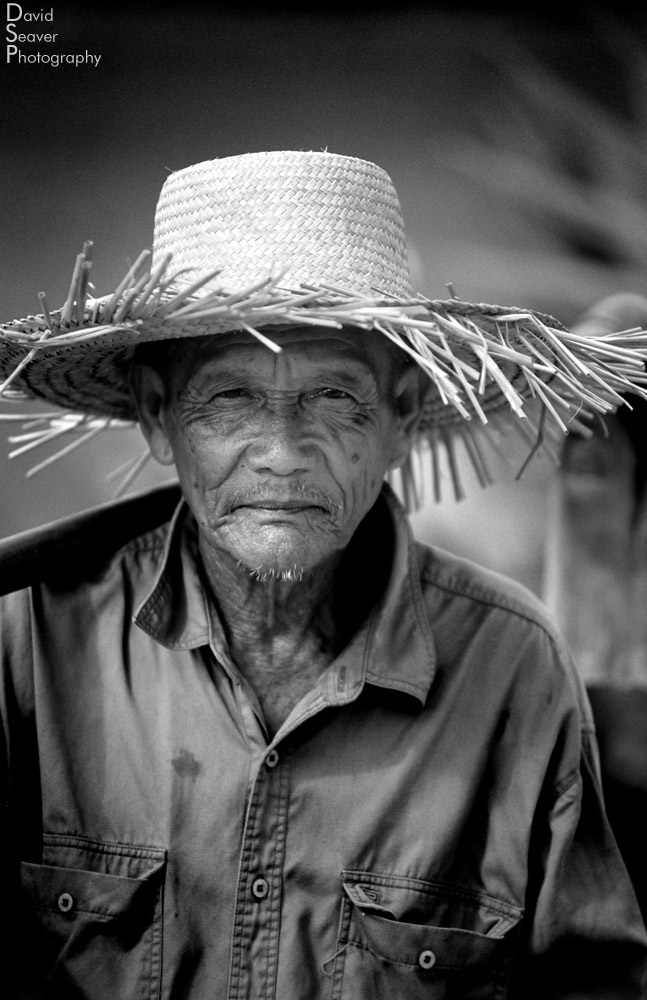
Nikon F100, 70-200, f3.2, Fuji Velvia 50, b&w processed in Photoshop
While riding around the countryside outside Kep, Cambodia on the back of my friend/fixer Rya’s rented moped, we had stopped so I could photograph the landscape, verdant green rice paddies leading up to dark green mountains. After a few minutes this old man came walking down the road. He was a 72 year old rice farmer that had survived the Khmer Rouge and the civil war in previous decades and was happy to chat and be photographed.
The light was hard from a late afternoon sun, but there was enough bounce from the light red dirt road we were standing on to not give super deep shadows. Although I shot a number of different angles of this man, I like the shallow depth of field keeping the focu on his weathered, kind face.
While traveling may begin as a search for place, it ultimately ends up being about people.

Nikon F100, 50, f4, Fuji Provia 100
Before children were to put on a traditional Khmer dances, there were filling a school room getting ready. It was slightly chaotic with kids running around, so I looked for interesting moments I could focus on to calm the scene.
When the action starts I find myself on auto-pilot, shooting instinctively, flowing really well. It’s these moments that I strive for, a photo-zen.

Nikon D2X, 17-35, f7.1, 30secs
As the chaos of the annual water festival swirled around town, I worked my way down the river, grabbing shots where I could. It was a sea of humanity, many sending floating candle boats down the river. From one of the bridges I made this long exposure of the candles blurring as they make their way down stream. I wasn’t carrying my tripod, so the camera is resting on the edge of the bridge, triggered by the self timer. I definitely had one hand on the neck strap, in case the camera decided to jump off the edge.
Traveling to countries while they’re having annual celebrations is an easy way to soak up the local culture and there are photo opportunities everywhere.
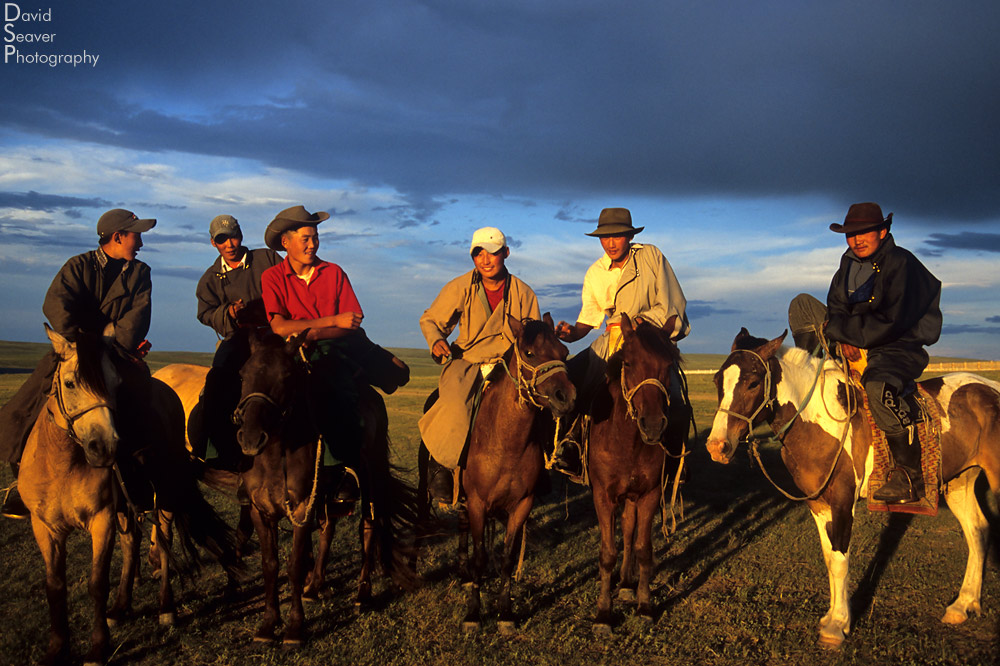
Nikon F100, 24-120, f5.6, Fuji Velvia 50
Traveling presents encounters that you don’t get in your normal life.
After driving all day through overcast skies, we reached our destination for the night, Oggi Noor Lake. We were sitting in our SUV, mustering up the energy to set up camp, when the sun dropped below the clouds and bathed everything in it’s golden light. I jumped out of the SUV and started shooting when I noticed a group of teenage boys on horseback on the beach below me. They saw me and waved me down. I clamored down to them. They were very excited and offered me a drink of vodka. After a few minutes of hand gestures we all made our way back up to where the others were. I shot a bunch of group photos and a few portraits before they headed off in different directions. In a few minutes, what had been a drab day turned into the best light I saw the whole trip.
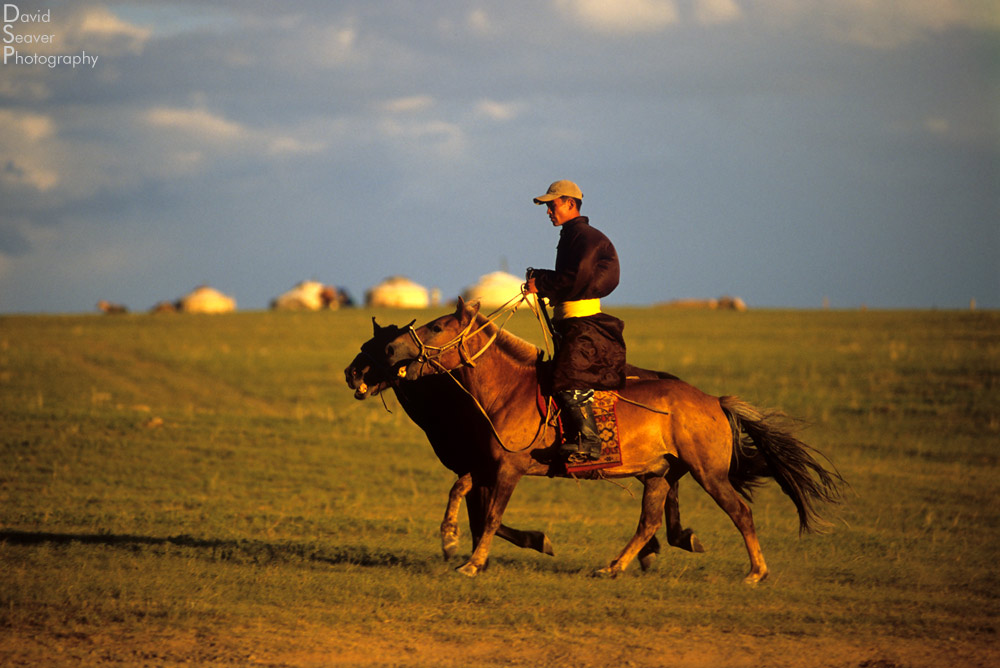
Nikon F100, 70-200, f2.8, Fuji Velvia 50
After the young Mongolian riders left, I captured this shot that I think sums up Mongolia the best and has been a favorite of mine over the years.
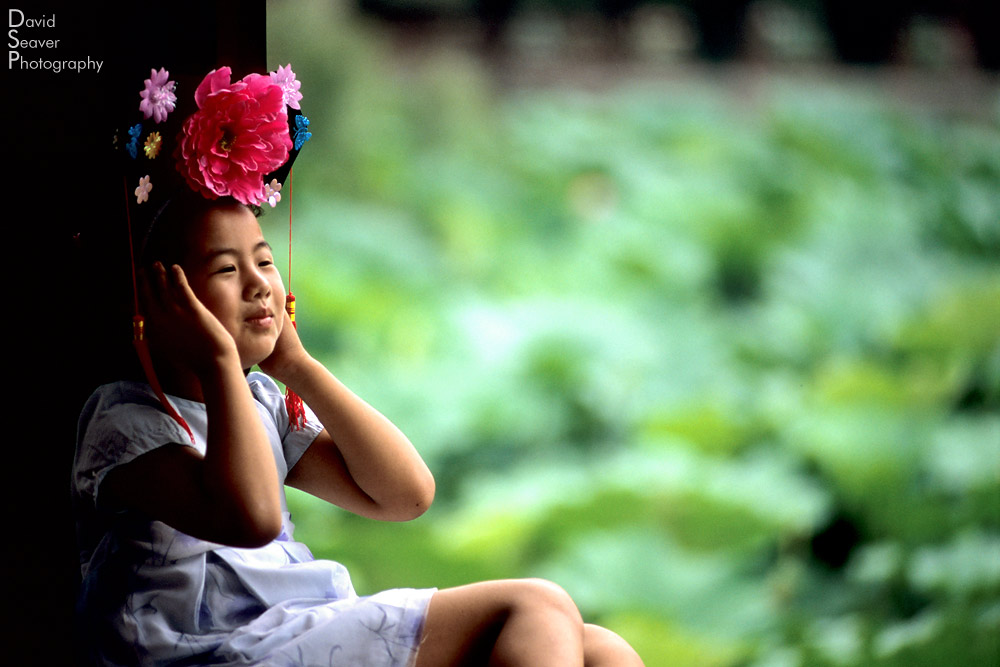
Nikon F100, 24-120, f4.5, Fuji Provia 100
This was a grab shot while meandering through the Summer Palace in Beijing, China. It was tough shooting with the bright smoggy haze that blanketed the city. The city was hot, in late summer. Shooting in touristy places like the Summer Palace, it’s sometimes hard to find new and engaging images that haven’t been taken a billion times before. This image came about as I was shooting the pond of lilies behind her. She sat down and started fussing with her hat. I made a few frames before the crowds overtook me and I moved on.
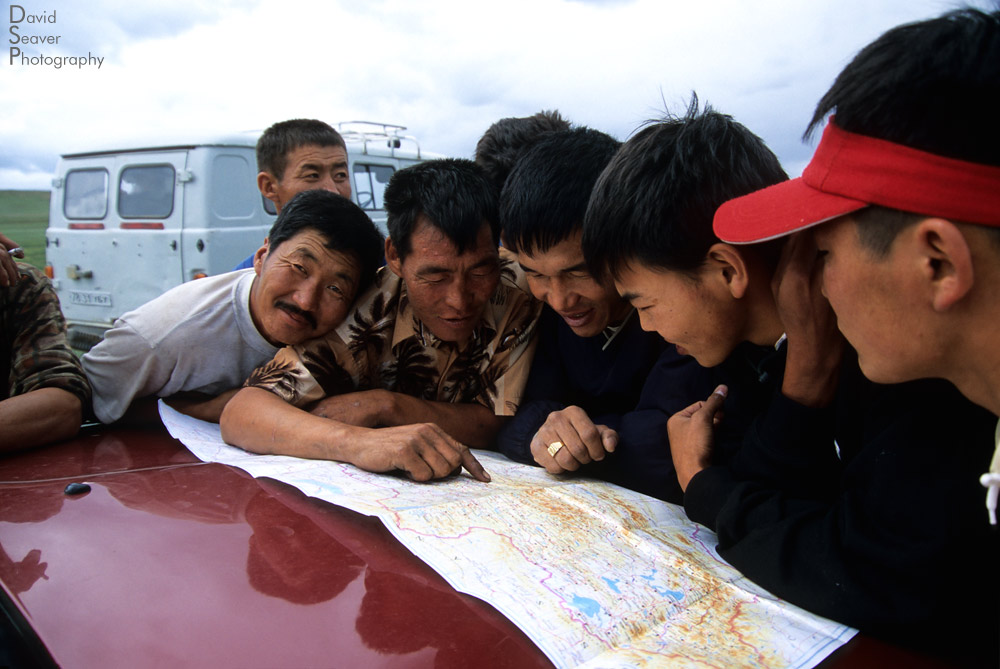
Nikon F100, 24-120, f5.6, Fuji Provia 100
Getting lost is part of traveling.
If your aim is to get lost, are you really lost?
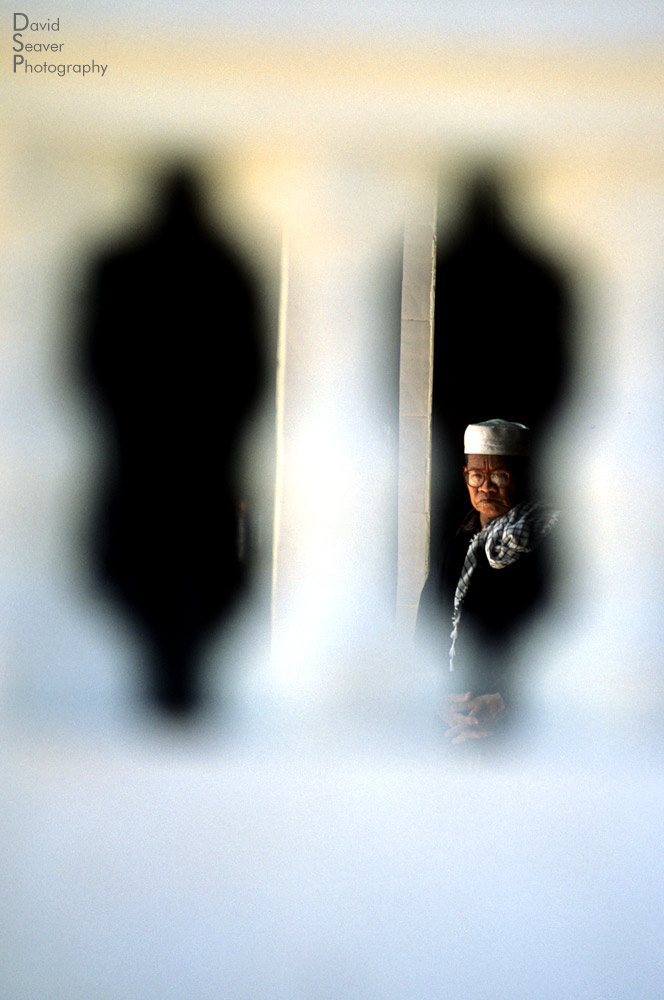
Nikon F100, 24-120, Fuji Provia 400
While in the process of documenting the small Muslim community in predominately Buddhist Cambodia’s city of Siem Reap, we were invited to join some of the community for a Ramadan meal. It was just after the time the USA was entering the war in Afghanistan and it was unclear how they would receive us. As with most people I meet traveling, they were exceptionally welcoming. I made this shot of an old man tentatively watching us from across the mosque, through a railing.
When I’m shooting I always look for things that can go in the foreground of a photo. I want to give depth and a sense of scale, add a bit of color, or just add a little framing. I couldn’t see over the railing, so shooting through it made more sense. You have to work with what you have.

Nikon D2H, 50mm, f4.5
If you really want the shot you might have to put up with some little annoyances.
The flies in Lake Mungo, Australia are persistent little buggers. You have about a minute from exiting the confines of your car until they cover you…or at least they covered me. I could barely handle it.

Nikon D2H, 24-120, f4.5
Forcing myself to not freak out over the flies rewarded me with this ridiculous landscape of one of Lake Mungo’s sand dunes with an impending rain storm that almost trapped us in the outback.
The weather can change in seconds. Those times can present stunning landscapes and colors. You may have to run for cover in a few minutes, but the leading edge of storms is a beautiful thing. Dark skies can also help to bring out the colors of the landscape.
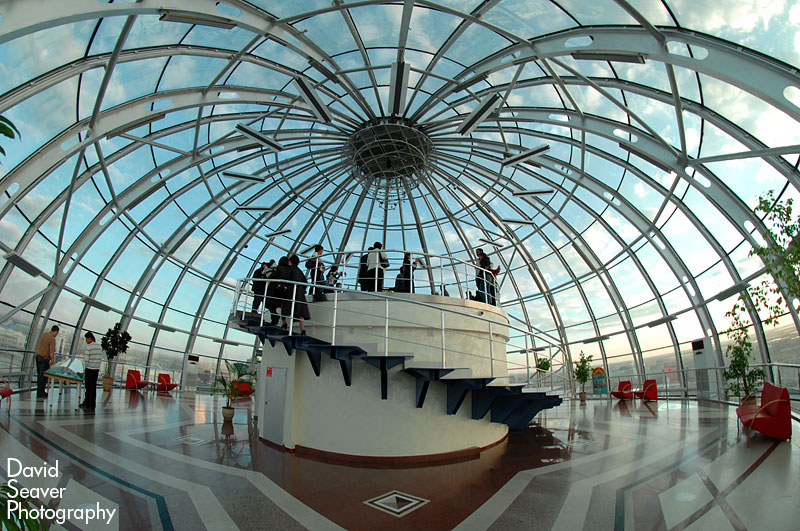
Nikon D2X, 7mm, f1
There are times when you just get a feeling about which lens to use and how to shoot a space. When you’re in the golden orb at the top of the Bayterek Tower in the new section of Astana, Kazakhstan the time is right to pull out the fisheye. While I think that fisheye shots can be gimmicky, there is a time and place for every lens.
The need to keep changing things up when you’re shooting is key. Along with the fisheye photos, I also shot with a telephoto lens and a normal wide angle. This gave a whole range of images to work from. Knowing that I wouldn’t be back to this place again on our trip, I made a point of a taking a few extra minutes and making a few extra frames.
Take the time to stop and look around.
Packing the gear bag for the day in an unknown city is a tough exercise in preparedness, economy, and guessing. You want access to all your gear, but you don’t want to lug it around day and night. What I bring depends on if there’s a car involved or if I’ll be hoofing it all day. This day in Astana we weren’t doing too much walking, but we were still moving around too much for my huge backpack. I used a medium sized shoulder bag, carrying two Nikon D2X’s, 70-200mm, 17-35mm, 50mm, and 7mm lens, one SB-800 flash, and an extra layer of clothing. It sounds like a lot, and it is, but when creating images is what you do, you drag that bag around until your sore and tired.
I love all my gear, but there are days when it’s good to go super light, back to basics, one camera one lens. I usually go for the 50mm. Forcing yourself to work in that limited frame will get you thinking about your photos and lead to more creative shots. Going back to basics is a good thing to do, revisit what you know, push the boundaries a bit. One camera one lens, especially a prime lens forces you to move your feet, changing your angle and giving you a new perspective. Zoom lenses are wonderful, but nothing beats moving your feet.
Taking great photos is about patience when you’re waiting for the shot, then hustling to work the moment until it’s gone. Setting yourself up for shots is as easy as paying attention to your surroundings. If you see something that works well as the background, be patient and wait for something to come in front of it. Something invariably will. Pay attention to weather and lighting, sunrise and sunset times and put yourself in places to make the most of each. Some places that are ‘known’ for sunset might be just as stunning at sunrise without all the crowds.
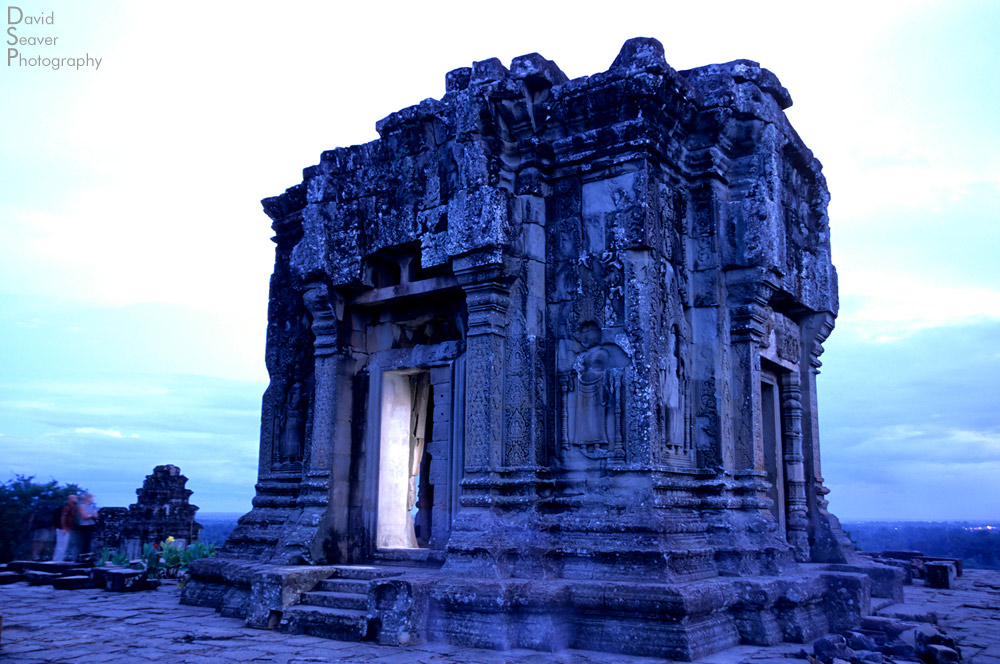
Nikon F100, 24-120, Fuji Velvia 50, SB-80 Flash, tripod
This shot was made just after sunset at Phnom Bakheng temple, overlooking Angkor Wat, in Cambodia. The camera is on a tripod, the flash is being triggered manually from inside the temple. The exposure is a few seconds. While making this photo we were already being hustled out by the guards before nightfall. You can always get a few minutes out of guards by being nice, starting to chat with them, and generally being polite. You’ll eventually have to leave anyways, and who knows, they might give you a private tour or show you some special place off the beaten track.
An interested, kind smile is your best currency when traveling, it is universally accepted and sometimes priceless.

Nikon D2X, 17-35mm, f18, 9 seconds
Try and get to places where you can have a view. This time lapse of the Bangkok, Thailand streets at night is from one of the many concrete pedestrian overpasses that are ubiquitous to South East Asia’s crowded cities. I wasn’t carrying a tripod, so I just rested the camera on the railing. It’s pretty hard to keep a camera still for 9 seconds, so find places to prop your camera. Time lapses are great for showing movement within a space. Is there crazy traffic? Are the crowds overwhelming? Go for the long exposure to convey the movement.
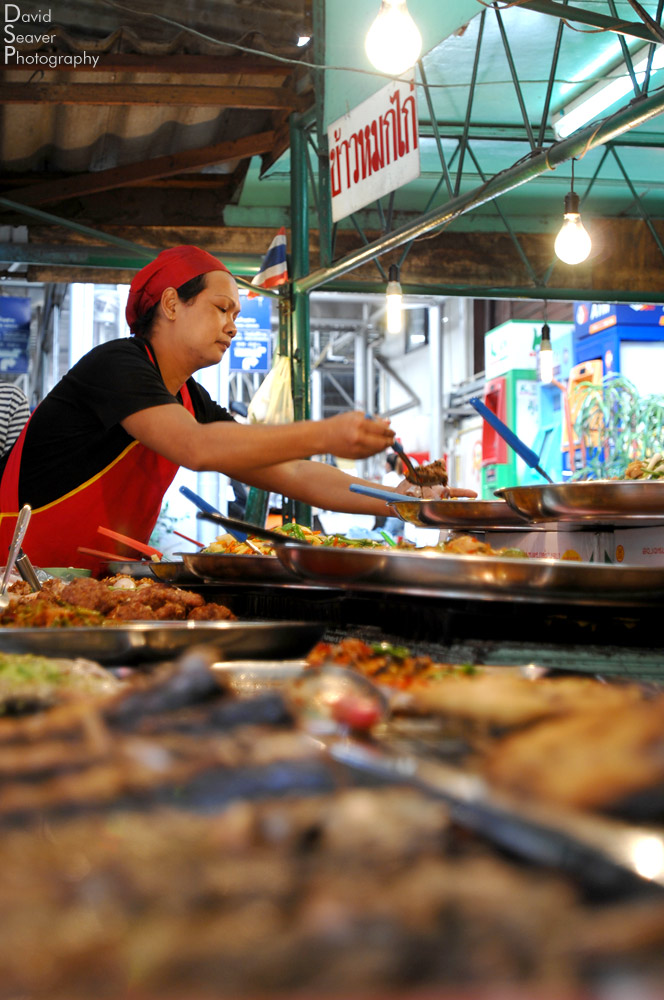
Nikon D2X, 17-35mm, f2.8
Follow your nose (and other senses) to take great travel photos. Street food is an amazing thing. Cheap, easy, and delicious. The best part is that people congregate near food, there’s usually lots of good color, and interesting moments to capture. And afterwards (or before) can you eat some interesting food! Ordering food or a drink from street vendors is a great way to break the ice and get you on a good foot for when you go back and ask to take photos of them.
When I’m traveling, it’s very apparent that I’m not your normal tourist taking little snapshots. When you bring out the big cameras people notice. Most people are very open to having their photos taken and I try and ask people if it’s okay before I get to it. If someone says no, then I just thank them and move on.
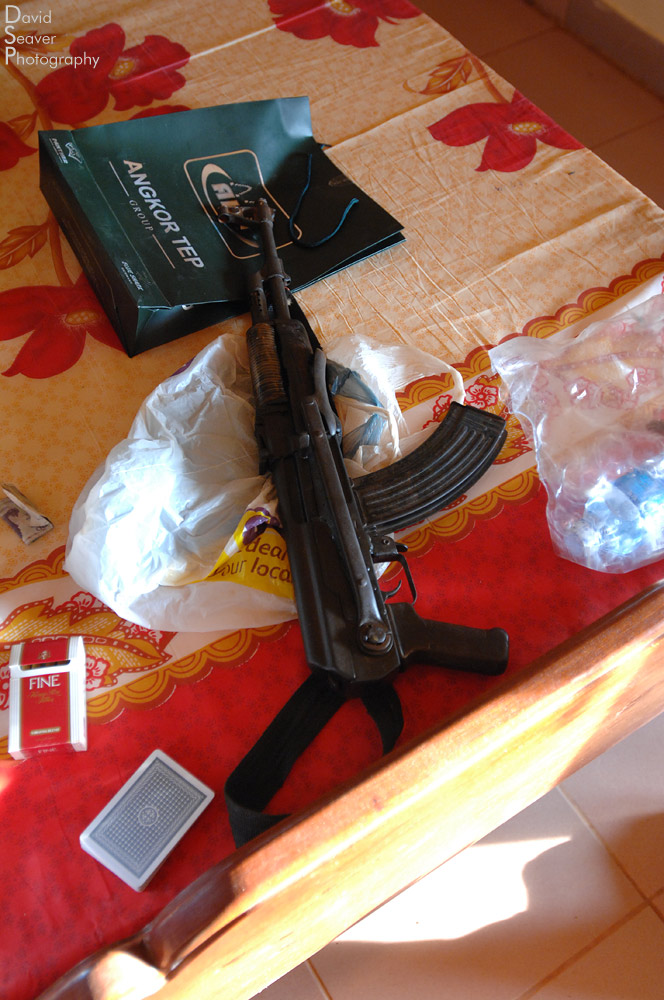
Nikon D2X, 17-35mm, f2.8
Traveling will surprise you.
Ok, so this isn’t a great photo, but it comes with a crazy travel story about getting lost in the Cambodian jungle on motorcycles. There are stories behind every photo.

